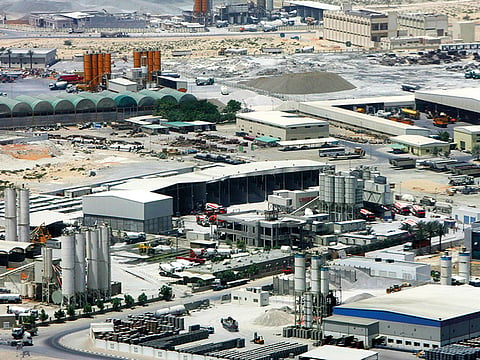Dubai’s warehouses and staff accommodation pique investor interest
Industrial assets are pulling in more high-profile buyers chasing double-digit gains

Dubai: Want double-digit returns on investments in Dubai real estate? Then you should be looking at the warehouses and other industrial assets the city has to offer. And its workers’ accommodation too. “Returns are still in double-digits on these type of assets while those for a simple residential building are much lower,” said Vivek Kumar, managing director at Sayi Consulting. “Plus, there is much greater volatility with residential assets, which you don’t see on industrial.”
“But if you construct or invest in [workers’ accommodation] costing less than Dh30 million and with multi-year leases, you can make Dh4 million to Dh4.5 million net a year even in today’s market conditions. With ready camps, the returns are even higher.
“If the market volatility is higher, we tell investors that [workers’ accommodation] can still get them 10-11 per cent. But can you make 10-11 per cent from a typical residential asset? I don’t think so.”
It seems to be a message resonating well with investors. Local and Gulf-based funds have been quite active in the UAE’s industrial real estate space in the last three years and the pace continues to pick up while bringing in new players.
“Institutional investors are the new players in UAE’s industrial real estate space — they were not there even five years ago,” said Kumar.
The owners of the Dubai-based Palmon Group — which has interests across sectors and including real estate — recently launched an industrial property-focused real estate investment trust (Reit). The ‘Manrre’ Reit, which is what it is called, plans to raise Dh330 million to “acquire additional rent-yielding commercial assets”.
It already has a portfolio of 19 such properties in the UAE valued at Dh200 million plus. This is split between logistics assets (62 per cent), industrial (23 per cent), offices (8 per cent), and staff accommodation (7 per cent).
“At the moment, it [the funds used] is seed capital infused by the promoters,” said Manohar Lahori, chairman of Palmon Group. “We are reviewing and evaluating assets everyday. A unique differentiation of Manrre is that we accept in-kind investment and cash buyout(s). If some one owns commercial real estate which matches Manrre’s growth strategy, he can add that portfolio to ours to enjoy cash now plus a quarterly dividend and future capital growth. We offer participating shares for the portfolio value that he put into Manrre.”
Lahori’s target is to get the Reit listed on the stock market by 2020 or so.
It is easy to see why investors would see value from taking on warehouses and such facilities. The rise and rise of e-commerce is driving a generational change in the logistics business, which typically means that warehouses need to figure prominently in the equation. Sizeable stretches of land have been allotted to host clusters dedicated to logistics and warehousing, which is fuelling a mini-development boom. Much the same is happening with labour camps and staff accommodation facilities.
With more land becoming available, demand for new stock has only intensified.
“Land is now available, both at primary and secondary locations in Dubai,” said Kumar. “This was a challenge two years ago and was the reason rentals had gotten so high. It was becoming a demand-and-supply issue, with rents 30-40 per cent higher 18 months ago.
“The new land coming in [is] being offered at 30-50 year leases. An 80,000-square-foot [workers’ accommodation] can take in up to 800 people.
“Dubai Investments Park no longer has much free land available — but Jebel Ali Industrial Area is where the action is. In Jebel Ali, most of the land transactions are upfront and that makes investors more confident because there is no lease rental every year. But it does reduce the ROI [return on investment] because you are putting more money upfront.
“[Workers’ accommodation] may be the least glamorous asset class in real estate. It is the one simple reason why many investors don’t identify themselves with it. But when you have a fairly sizeable population living in these facilities, investors will have to look at the asset more closely. Maybe now, that’s starting to happen.”
Demand for industrial heats up ahead of 2020
All kinds of industrial real estate could get a boost from the activities leading up to 2020.
“Our vision for Manrre is to list the fund on a stock exchange within the next two years to generate maximum return for our investors,” Manohar Lahori of Palmon had said in a statement at the time of the fund’s launch. “As we get closer to 2020, we believe this is the right time to launch.”
Sign up for the Daily Briefing
Get the latest news and updates straight to your inbox



